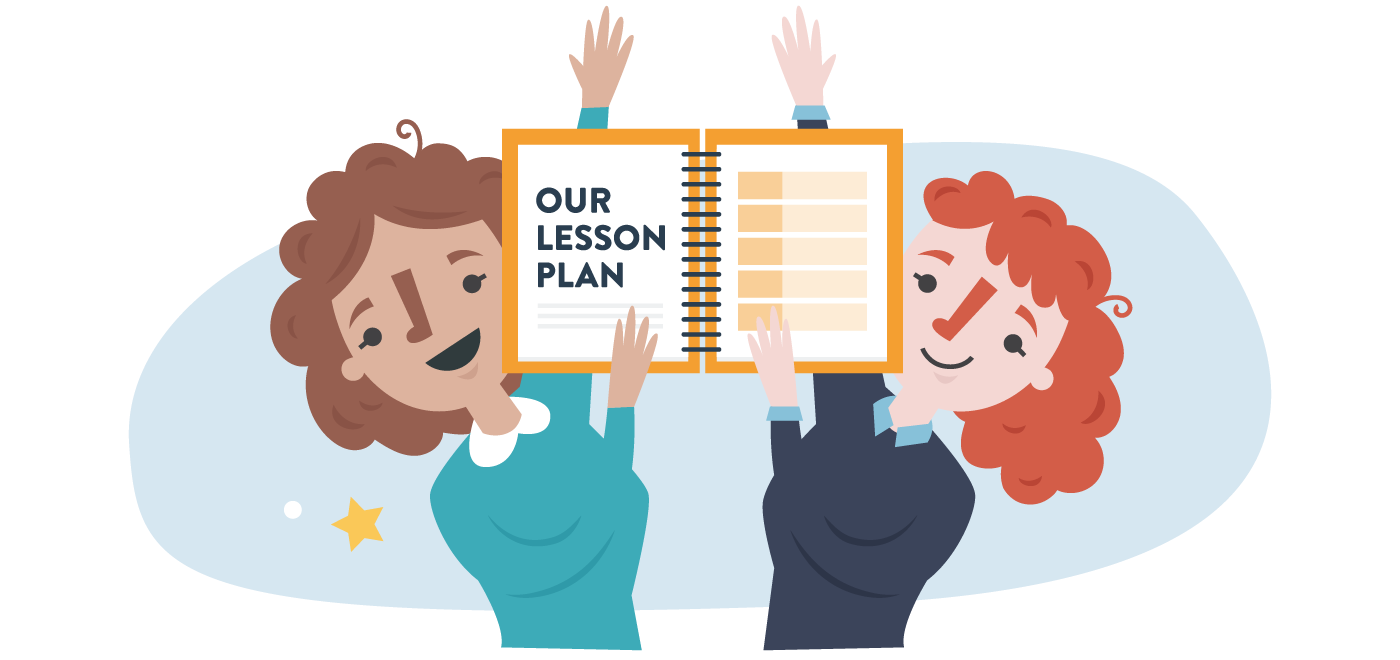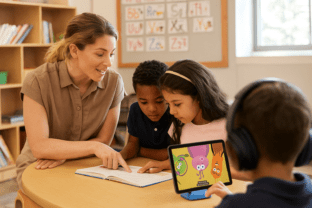In a large class led by just one teacher, it can be challenging to support the diverse needs of every learner.
As districts continue to work towards goals of personalized learning, curriculum teams are finding that two heads are better than one. Putting two teachers in the same classroom allows for stronger student engagement, deeper levels of personalized learning, and more time for individual or small-group conferencing with a teacher. Co-teaching, a model in which two teachers lead one classroom together, is often found in special education or ELL settings. With English-language learners now making up almost 9.5% of public school students, and studies showing that smaller class sizes are correlated with higher student achievement, co-teaching is more relevant than ever before.
While pairing teachers increases the potential for flexible, supportive classrooms, co-teaching is not without its challenges. Finding the right instructional model for teachers and students is essential to co-teaching success.
Co-teaching Models
Marilyn Friend and Lynne Cook are some of the leading experts on the subject of co-teaching. In their book Interactions: Collaboration Skills for School Professionals, they describe various co-teaching models and the ways each one can benefit students and teachers.

One Teach, One Support is a common co-teaching setup for a student teacher and supervising teacher. However, it can also be very helpful for co-teaching veteran teachers to gauge the success of a particular lesson or method of instruction. The supporting teacher can provide extra assistance to students who may need redirection or further explanations, and they are also able to observe a lesson in the real-time perspective of a student, enabling immediate feedback on the lesson’s success.
Parallel Teaching is when co-teachers teach the same lesson separately to different groups of students. This method is useful for a classroom that has two groups of different learners, such as a classroom with students who are identified as special education or ELL. These students can find both academic and behavioral benefits with this style of teaching. Parallel teaching can also be quite useful for a large class sizes, because splitting the classroom allows students to receive more support and focused attention.
Station Teaching can be extraordinarily useful for regular classroom activities like writing workshops or reading centers. In this model, co-teachers split students into multiple “stations”, usually including one station of independent or computer work paired with rotations for small group instruction. These smaller groups allow for more attention and interaction with a teacher. This also creates an environment of more personalized instruction, because the students are grouped with others at their same subject level.
Team Teaching is a style of tag-team teaching where both teachers present the lesson together to one group of students. Each teacher engages directly with students throughout the lesson and has a deep understanding of the material and the lesson design. This can be a productive model for an ELL team or for two teachers who may have slightly different styles of instruction.
How to Support Co-Teaching
During a Twitter chat hosted by Ready, Set, Co-teach!, teachers discussed how administrators can better support co-teaching. Overwhelmingly, the teachers who participated in the chat asked for a set block of time to plan lessons each week. By embedding explicit planning time throughout the school day, districts can improve communication, collaboration, and efficiency amongst co-teachers.

In a report from the University of Virginia’s Curry School of Education, many teachers also cited a “lack of administrative support” as one of their greatest co-teaching challenges. Administrators can play an important role in the success of a co-teaching partnership. With regular check-ins and class observations, they can help to facilitate clear communication between both parties. Administrators should also make themselves a resource to resolve conflicts that may arise between teachers and maintain availability to address any areas of difficulty or concerns, as some partnerships may not find immediate success.
Including opportunities for co-teachers to get to know one another both academically and personally will strengthen their teamwork in the classroom, creating a more positive learning environment for the students. Teachers rank mutual respect and trust as one of the top three things for a positive co-teaching experience, and administrators can help foster positive relationships between co-teachers through professional development and social events.
Online programs can take some of the burden off of teachers by offering student-approved, no-prep lessons that teachers can monitor on their own time. Resources like eSpark support co-teaching classrooms, allowing both teachers to view and act on student reports.
The Benefits of Co-teaching
- Co-teaching is reported to increase student engagement and establish a positive classroom community.
- Particularly for students with disabilities, studies show improved test scores as well as increased social communication.
- For inclusion or ELL classrooms, a specialized teacher and a general education teacher can work together to create a holistic curriculum that addresses and benefits all students.
- Pairing a new teacher with a veteran teacher allows for a merging of tried and true practices and new, innovative ideas.
- Co-teaching allows for teacher growth and has even pointed to increased job satisfaction among teachers.
Overall, putting time and resources into co-teaching allows districts to more fully commit to personalized learning by giving more targeted support to students on all levels. Co-teaching helps students build individual skills at their own pace with the targeted support they need.



